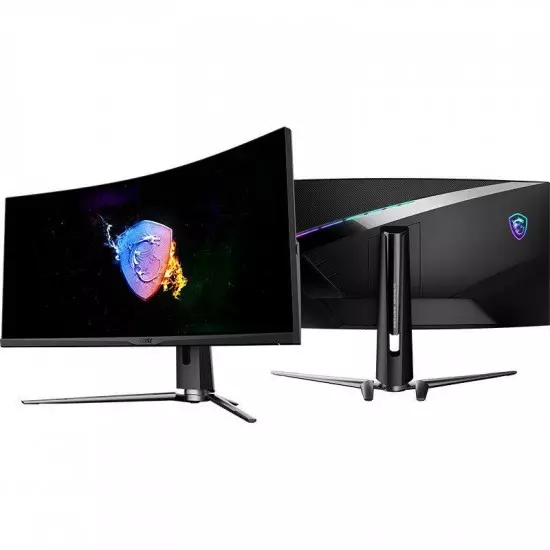
How Hardware Upgrades Are Fueling the AR Glasses Market
December 20, 2024
How Recyclable Components Are Shaping Future Hardware
December 20, 2024How High-Refresh Monitors Are Revolutionizing Gaming
The gaming world is always evolving, with each advancement promising a better, more immersive experience. One of the most significant breakthroughs in recent years has been the rise of high-refresh-rate monitors. Gone are the days when a 60Hz refresh rate was the standard for gaming. Today, monitors boasting refresh rates of 120Hz, 144Hz, 240Hz, and even 360Hz are transforming how gamers perceive and engage with their favorite titles. But what makes these high-refresh-rate monitors so revolutionary, and are they worth the investment? Let’s dive into the details.
Understanding Refresh Rates
Before we delve into the impact of high-refresh-rate monitors, it’s important to understand what a refresh rate is. Measured in hertz (Hz), a monitor’s refresh rate refers to how many times per second the display updates with new information. For instance, a 60Hz monitor refreshes 60 times per second, while a 144Hz monitor refreshes 144 times per second.
The higher the refresh rate, the smoother and more fluid the visuals appear. This difference is particularly noticeable in fast-paced games, where quick reactions and precise timing are critical.
The Impact on Gaming
High-refresh-rate monitors have fundamentally changed the way games are played and experienced. Here’s how:
1. Smoother Visuals and Enhanced Gameplay
With a higher refresh rate, movements on screen appear smoother and more realistic. This is particularly beneficial in genres like first-person shooters (FPS), racing games, and sports simulations, where rapid motion is common.
For example, in competitive FPS games such as Counter-Strike: Global Offensive or Valorant, a 144Hz or 240Hz monitor can make tracking enemies and aiming much easier compared to a 60Hz monitor. The fluidity provided by a high-refresh-rate display can give players a significant edge in these fast-paced environments.
2. Reduced Motion Blur
Motion blur occurs when a monitor cannot keep up with the rapid movement of on-screen elements, causing visuals to appear smeared or unclear. High-refresh-rate monitors minimize motion blur, ensuring that fast-moving objects—such as an enemy in an FPS game or a speeding car in a racing game—are sharp and easy to track.
3. Lower Input Lag
Input lag refers to the delay between a player’s action (e.g., pressing a key or moving the mouse) and the corresponding action appearing on the screen. High-refresh-rate monitors, when paired with high frame rates (FPS) from a capable gaming rig, significantly reduce input lag. This faster response time is crucial in competitive gaming, where milliseconds can determine the outcome of a match.
4. Enhanced Immersion
Gaming is all about immersion, and a high-refresh-rate monitor enhances this by making the action feel more lifelike. Whether you’re exploring an open-world RPG, racing down a virtual highway, or engaging in an intense multiplayer battle, the smoothness of the visuals helps pull you deeper into the game.
The Competitive Edg
For professional and competitive gamers, high-refresh-rate monitors are no longer a luxury—they’re a necessity. Competitive games like Fortnite, Apex Legends, and Call of Duty demand quick reflexes and precise movements. A monitor with a refresh rate of 240Hz or higher ensures that players can react faster and perform better compared to opponents using lower-refresh-rate displays.
Moreover, many esports tournaments now use high-refresh-rate monitors as the standard, making them essential for aspiring professionals looking to practice under tournament-like conditions.
Hardware Requirements

While high-refresh-rate monitors offer undeniable advantages, they also require compatible hardware to deliver their full potential. Achieving a high refresh rate requires a powerful graphics card capable of consistently producing high frame rates. For instance, to fully utilize a 240Hz monitor, your system should be able to push 240 frames per second (FPS) in the games you play.
Additionally, other factors such as resolution and graphics settings can impact performance. A balance between high resolution (e.g., 1440p or 4K) and high refresh rates often requires cutting-edge GPUs like the NVIDIA GeForce RTX 40-series or AMD Radeon RX 7000-series.
Are High-Refresh Monitors Worth It?
The value of a high-refresh-rate monitor depends on your gaming habits and priorities. Here’s a breakdown:
- Competitive Gamers: If you’re into competitive gaming, investing in a 144Hz or 240Hz monitor is a no-brainer. The smoother visuals and reduced input lag can give you a distinct advantage.
- Casual Gamers: For casual players, a 120Hz or 144Hz monitor still provides a noticeable improvement in gameplay experience without breaking the bank.
- Content Creators: Gamers who double as content creators may find high-refresh-rate monitors useful for video editing and live streaming, as the enhanced visuals can make editing gameplay footage easier.
Future Trends
The future of high-refresh-rate monitors is exciting. As technology advances, we’re seeing the emergence of ultra-high refresh rates like 360Hz and the integration of adaptive sync technologies such as NVIDIA G-Sync and AMD FreeSync. These features ensure that refresh rates are dynamically adjusted to match the GPU’s output, eliminating screen tearing and further improving the gaming experience.
Additionally, manufacturers are working to bring high refresh rates to higher resolutions, such as 4K and even 8K. While current 4K high-refresh-rate monitors are expensive and require powerful hardware, they represent the next frontier in gaming displays.



